Newborn Care
You know those baby first aid and grooming kits, which come with, like, 50 items? You don’t need all that junk. Seriously.
Here’s what you really do need. These are thing you will use on a day-to-day basis and for travel (hopefully, one day, we’ll get to travel again…).
1. Baby Manicure Stuff
Baby Nail Clippers
Did I mention the razor sharp baby claws already? Yes, I think so. For whatever reason, baby fingernails grow fast and are incredibly thin and jagged. Please arm yourself with some baby nail clippers and don’t be afraid to use them.
Honestly? I find the cheapest/simplest clippers work the best. Safety 1st is good. The built-in lights and skin guard that others have just get in my way.
Get two, and put one in your travel kit.
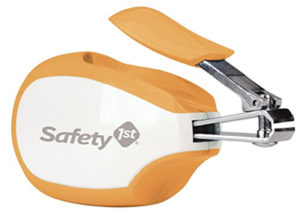

Yes, someone always chimes in and says, “ya know, you can just bite them off with our teeth?” Go right ahead, if that’s your jam. I suggest everyone else clip your baby’s nails like a normal person.
The key is to distract baby with something (TV? sure) and trim her nails in good light. Eventually, your nail-clipping jitters will fade away.
Nail File
Another option is to use a baby nail file. I suggest the Baby Blue Giraffe nail file (below) – it’s gentle and works fast. Yes, you can also use the .99 cent emery board from the drugstore, but note that the grit is quite large for newborn nails.
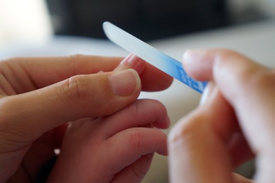
Another cool “filing” option is the Little Martin’s Drawer (~$29) electric rotary trimmer. It comes with pads for your toddler and yourself. It’s super quiet so it won’t scare baby, and it even has a light on the tip if you need it. Just know it’s battery operated!
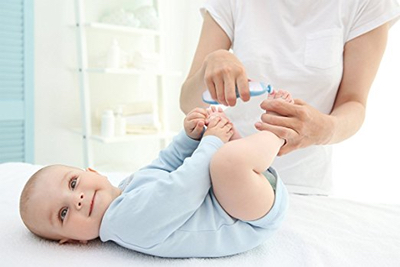

Nail Scissors
Yet another option is to use nail scissors, like these Piyo Piyo Nail Scissors (~$7), another mommy favorite.
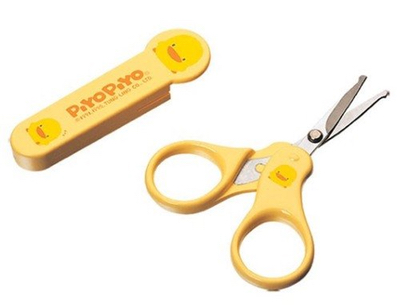

Those are your nail trimming options in a nutshell.
2. Meds
Baby Acetaminophen
Maybe not today and maybe not tomorrow (and not before 2 months of age!), but soon enough you will need some acetaminophen for teething pain or post-vaccination pain or for reducing a fever.
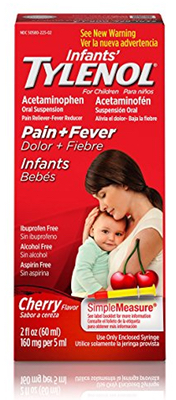
This stuff works wonderfully. Be extra sure to follow the dosing instructions on the package (make SURE you are using INFANT, not CHILDREN’S, though I’ve been told recently that they are the exact same thing – but always check the package!). Tylenol, tried and true for years, works just fine.
Remember, you can also use baby Motrin, but not until 6 months of age; this stuff works wonders for teething pain.
Pacidose ~$13
If your little one doesn’t like to take medicine from a syringe, try the Pacidose. Invented by a doctor, medicine is fed through the syringe into a pacifier for fuss-free delivery.
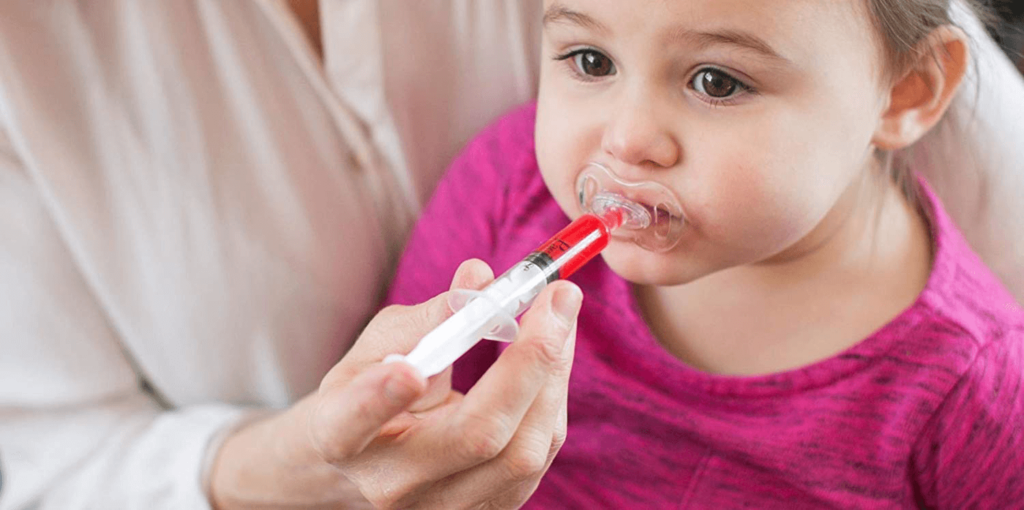

*Parent hack: One of Brit’s friends had the GENIUS idea to use a baby syringe to fill the top of a bottle (just the nipple) with the appropriate dose of medicine to give meds to baby (it works functionally like the pacidose). If your babe is super-resistant, pediatricians also say you can mix in something sweet, like juice or even juice concentrate.
3. Anti-Gas Medicine
You may find that the majority of baby’s woes are related to gas pain. Babies’ immature digestive systems are prone to gas problems. If you’ve ever had bad gas pain, you understand the discomfort it causes. Welcome to “colic.”
Look for the active ingredient “simethicone,” which is the same active ingredient in Gas-X, etc. Simethicone weakens the surface tension of gas bubbles, thereby allowing them to break up (i.e., burping or passing gas). We recommend:
Little Remedies for Tummys. You may also look into gripe water (Mommy’s Bliss seems to be the favorite). Many moms swear by this too. I used the crap out of this stuff with baby Alice; it’s hard for me to say if it worked or not.
About Gas Medicine
Whether or not any of this stuff actually works is still a mystery to doctors. There isn’t conclusive evidence either way. Anecdotally, it seems to work — or it could just be the sweetness that seems to alleviate crying.
If your baby has terrible, chronic gas pain (especially after finishing a course of antibiotics), I highly recommend a high-quality probiotic. When I say this stuff worked miracles on Alice’s digestive system, I’m not even kidding. She went from being up several times a night screaming with pain to sleeping peacefully through the night (well, sort of). Note that you need to buy this stuff in person because it also requires refrigeration. You can find it at Whole Foods and many times, your local drugstore pharmacy will special order it for you (24 hours notice). *Consult your pediatrician with questions.
4. Snot Remover
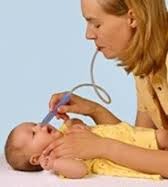
Lesson #1 of motherhood: make sure your baby can breathe. You will probably be sent home from the hospital with an old-fashioned bulb syringe (a bulb aspirator) and strict instructions about how to suck mucus out of your baby’s nose. This is critical because newborns ONLY breathe through their noses, and if it’s blocked… it’s makes life hard for them, especially when sleeping.
I recommend taking it a step further and getting NoseFrida the Snotsucker (~$15). Yes, that’s really the name. Don’t worry, it’s not as bad as it looks. And NO, the snot does NOT go into your mouth (yuck).
You can also find battery-powered snot-sucking devices if you aren’t up for the [ahem] mouth job. These are also very highly rated and easy to use.
This is essential for when your baby gets his first cold.
Onward.
5. A Thermometer
There is something I need to clear up right away: you know those great little digital ear thermometers? Well, guess what, those do NOT work on babies for… a long, long time. The reason is because their ears are too small to get an accurate reading (unless you are a trained professional and know how to do it right every time).
Rectal Thermometer
The gold standard in pediatric temperature-taking is [sorry to say] the simple rectal thermometer. It’s the most accurate way of taking a baby’s temperature. I don’t like it either, people, but it works!
For those about to email me and say, “but the nurse at the hospital said to never use a rectal thermometer because I might puncture my baby’s bowel…”
A rebuttal from Dr. Jessica:
“Rectal is definitely best, I don’t want to imagine what you would have to be doing to cause a bowel perforation. If you use a little lube and only insert the silver tip and not the whole darn thing, it’s hard to go wrong.
With very young babies, the armpit temp is pretty close, but at that age you really want to know for sure, so rectal is still the way to go. For older babies and kids, armpits are usually about a degree lower than core temp, so you get a pretty good idea this way and knowing the exact temperature after a certain age isn’t that crucial.
Ear thermometers are a waste of money. Temporal thermometers work well in settings where they can be calibrated often, but aren’t very reliable when you buy them from the store. So… yeah, good old-fashioned rectal or sub-lingual temps are still the most accurate, and anyone who is really worried about bowel perforation is doing it SCARILY wrong.”
Dr. Jessica Sours, Pediatrician
Temporal Thermometer
An alternative to these is the aforementioned temporal artery thermometer. I find the Exergen Temporal Thermometer to be really quick and easy, although I will go back and take a rectal temp if I’m questioning the temporal reading.
With a simple swipe across the forehead, you can get a fairly accurate, hassle-free temperature reading. This thermometer takes some practice (it’s a little strange because you start with it in the OFF setting), but once you master it, you’re good to go.
Again, call your doctor if your child has a fever, cough, trouble breathing, sore throat, belly pain, vomiting, diarrhea, rash, dizziness, or just doesn’t feel well. If your child has been near someone with coronavirus or been in an area where lots of people have coronavirus, tell the doctor. Talk about whether your child needs a test for coronavirus.
6. Skin Care
There are a handful of ailments that nearly every infant experiences in his/her first year of life: cradle cap, diaper rash, dry skin — oh, and let’s not forget about diaper thrush from H-E-double toothpicks. And don’t even get me started on the eczema.
The truth is we’ve shied away from diving too deep on infant skin care products because the jury is still out on the topic of which skincare products you should stay away from for babies. Soy, for example… it’s thought that if soy is introduced via the skin (too early via skincare products), it could cause a long-term soy and/or peanut allergy. Yes, the way that baby’s immune system encounters and interacts certain “invaders” is still very poorly understood, so…. if you don’t really need skincare products for your baby, then (please) just skip it.
Another big comment to make about “eczema”… eczema is an autoimmune disorder of the skin. No amount of creams is really going to fix it. You have to change your diet.
But nobody wants to hear that.
Anyway, if you really need something in the skincare department, we recommend Baby Pibu. Read more about their skincare products here.
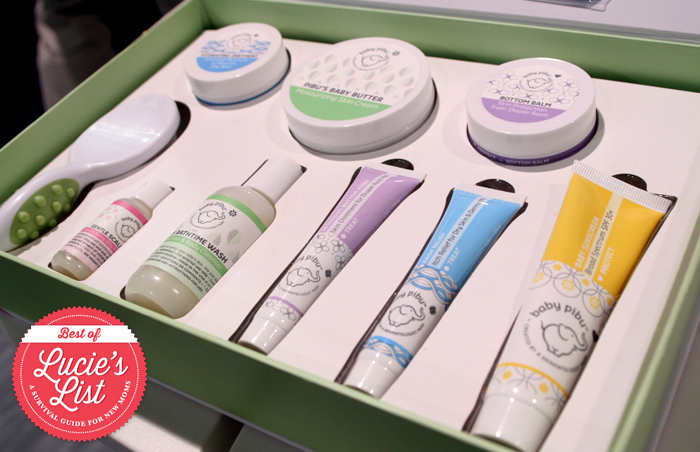
Another simple skincare staple to have in your drawer is Coconut Baby (100% organic), which can be used for so many ailments: cradle cap, eczema, psoriasis, and diaper rash to name a few (note: will melt if too hot!). I have stolen this from my kids so I can use it myself, mwaaaaaa. Sorry kids!
Did we miss anything? Let us know what you have in your baby’s medicine cabinet in the comments below.
OMG, you did it!! All 10 categories, check, check, check! Last, you absolutely must join the club as you embark on this parenting journey. There, you’ll get our award winning weekly newsletter. Cheers!! — Meg
Thanks for this article. My children have eczema and I write about my experiences on my website. I have been using vanicream/cerave/aquaphor. I didnt know about Coconut Baby. Will definitely have to check it out. Your comment about diet is huge! I definitely agree with you there. My children benefited from eating certain foods and healing their gut. From my experience, eczema is treated from inside(gut) and out (skin)